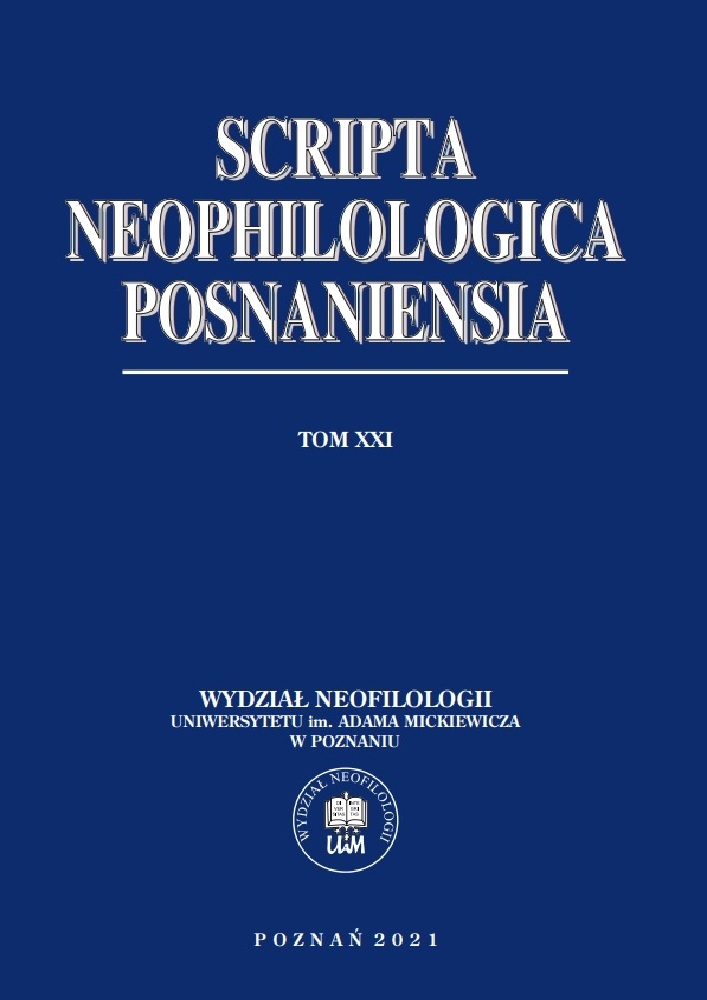Abstrakt
The Arabian Nights were passed orally for long eras, long before they were written down; the collective sense, through several anonymous narrators, developed them: changing, modifying, omitting and adding to this oral discourse. All for the purpose of entertaining the public according the spirit of the age and the socio-cultural contexts, afterwards, it was recorded in different versions, as diverse as their sources, up until the landmark version, namely the one printed in Bulak, Egypt in 1835.The West is to be commended on paying attention to the significance of The Arabian Nights, academically and creatively, before its original-home, especially since it was later translated to many languages. After French orientalist Antoine Galland (1646 - 1715) translated into French between 1704 and 1713 a third of the manuscript he had brought from the Orient.This study delves into “The Impact of The Arabian Nights on Modern Egyptian Narration”. The researcher tries to point out how Egyptian writers were inspired by the classic text by examining Naguib Mahfouz's Arabian Nights and Days (Layālī alf laylah) as a case study. An analytic, text-based approach was used to detect the intertextual interaction between the classic and the modern, and to explore how classical elements and connotations were employed within the modern text.
Bibliografia
An Arabic version of this article was previously published at the cultural magazine of Jordan University المجلة الثقافية لجامعة الأردن in volume NO.79 , 2011.
Abo Al-Hussein, H. 1994 “Shahrazad and the development of the French novel from Classicism to Symbolism”. Fusul Journal, the General Egyptian Book Authority, Egypt. vol. 13.2. summer. 268. 275-276. [Original title: هيام أبو الحسين- شهرزاد وتطور الرواية الفرنسية من الكلاسيكية إلى الرمزية- فصول- الهيئة المصرية العامة للكتاب- مصر مجلد 13- عدد 2- صيف 1994م- ص 268.]
Al-Gheitany,Gamal. 1980. “Naguib Mahfouz Remembers”, Al-Maseera Publishing House - ed. 1. 54- 42-88. [Original title: جمال الغيطاني – نجيب محفوظ يتذكر- دار المسيرة – بيروت – ط1- 1980- ص 54.]
Al- Musawi, Muhsin J. 2004.“The “mansion” and The Rubish Mounds: “The Thousand and one Nights in popular Arabic tradition, Journal-of Arabic literature, vol.35, No.3.351-352.
Al-Qalamawy, Saheir.1943.“Alf LailawaLaila (One Thousand and One Nights”. Egypt,
Al-Ma’aaref publishing house. 2-141-142. [Original title: سهير القلماوى- ألف ليلة وليلة- مطبعة المعارف ومكتبتها بمصر- 1943م- ص 2. ]
Al-Zamarli,Fawzi. 2002. “The Poetics of the Arabic Novel: A Study into the Forms and Meanings of Arabic Novels”, Tunisia, University Publishing Center. 144. [Original title: فوزي الزمرلي- شعرية الرواية العربية، بحث في أشكال تأصيل الرواية العربية ودلالاتها- مركز النشر الجامعي – تونس -2002-ص144. ]
Hafez, Sabri. Summer 1994. “The Dialectic of the Complex Narrative Structure in the ‘Nights’ of Shahrazad and Mahfouz”, Fusul Journal, vol. 13, 2. 35. 49.52. [Original title: صبري حافظ – جدليات البنية السردية المركبة في ليالي شهرزاد ونجيب محفوظ – فصول – مجلد13 – عدد2- صيف1994م- ص35. ]
Hawthorn, Jereny. 1992. “A Glossary of Contemporary literary theory”, Distributed in the USA by Rutledge, Chapman and Hall, Inc. 29 west 35th street, New york, NY 10001.
Irwin, Robert. 1994“The Arabian Nights: A Companion”. Allen Lane- thePenguin press,New York, USA. 42-43.
Knipp,C. 1974. “The Arabian Nights” in England: Galland’s translation and its successors-Journal-of Arabic Literature, vol.5, 48. Fahndrich, Harmut. 2000, “Viewing” The Orient” and Translation Its literature in the shadow of the Arabian Nights, Yearbook of Comparative and General-literature.48, Indiana University, Bloomington, Indiana.98.
Mahfouz, Naguib. 1982. “Arabian Nights and Days”, Egypt library, 3-4-6-7-8-9-10-11-15-34-36-37-38-87-171-174-195-200-203-204-212-213-219-220-223-225-246-258. [Original title: نجيب محفوظ – ليالي ألف ليلة – نهضة مصر- 1982م. ]
Mahfouz,Naguib, 1994. “The Arabian Nights Encapsulated the Oriental-Civilization”, Interviewed by: Hussein Hammouda - Fusoul Journal, The General-Egyptian Book authority, vol. B – 2. 378-380. [Original title: نجيب محفوظ- «ألف ليلة» أحاطت بالحضارة الشرقية – حوار أجراه معه: حسين حمودة- فصول- الهيئة المصرية العامة للكتاب – مجلد B، - عدد 2 – صيف1994م – ص 378.]
Serkis, Ihsan. January 1979. “Duality in the Arabian Nights”,Beirut, Al-Tali’a Publishing House, ed. 1. 211. [Original title: إحسان سركيس- الثنائية في ألف ليلة وليلة – دار الطليعة – بيروت – ط1 يناير 1979- ص211. ]
Zamora,Lois Parkinson and Faris, Wendy B. 1995. “Magic realism: post-Expressionism, in Magical-Realism, Theory, History, Community”, (Durham, NC: Duke University press), 15-31.
Hart, Stephen M. and wen-chin Ouyang. 2005.“A Companion to Magical-Realism, Tamesis, wood bride, NY, USA. 1-4-17.
The Arabian Nights and Days. (n.d).“Riwayat Al-Hilal-(Al-Hilal-Novels, a monthly journal-of world tales)”, Al-Hilal-Publishing House, vol. 8.88.135. [Original title: ألف ليلة وليلة – روايات الهلال – مجلة شهرية لنشر القصص العالمي – دار الهلال – د.ت الجزء الثامن – ص 135. ]
The Arabian Nights. 2003. Breslau Edition - The Egyptian National-Library and Archives, vol.1-3-4. ed. 3. 6-12-15-31-40-43-67-83-133-136-146-166-197-267-394. [Original title: ألف ليلة وليلة- طبعة برسلاو – دار الكتب والوثائق المصرية – مجلد1 – ط3 – 2003م – ص6.]
Todorov, Tzvetan. 1994.“Introduction à la littératurefantastique - translated into Arabic by: Al-SeddiqboAllam, reviewed by: Mohammed Birada - Foreign Cultural-Studies - Sharqiyyat Publishing House - ed. 1. 45. [Original title: تزفيتن تودروف- مدخل إلى الأدب العجائبي- ترجمة: الصديق بو علام، مراجعة: محمد برادة- دراسات ثقافية أجنبية – دار شرقيات ط1-1994م –ص45. ]
Uspenskij, Boris. 1999. “A Poetics of Composition: The Structure of the Artistic Text and Typology of a Compositional-Form”, Translated into Arabic by: Said Al-Ghanimy and NasirHallawi, Egypt, the National Center for Translation, the Supreme Council of Culture. 149. [Original title: بوريس أوسبنسكي- شعرية التأليف، بنية النص الفني وأنماط الشكل التاليفي- ترجمة: سعيد الغانمي، وناصر حلاوي- المشروع القومي للترجمة – المجلس الأعلى للثقافة – مصر 1999م – ص 149. ]
